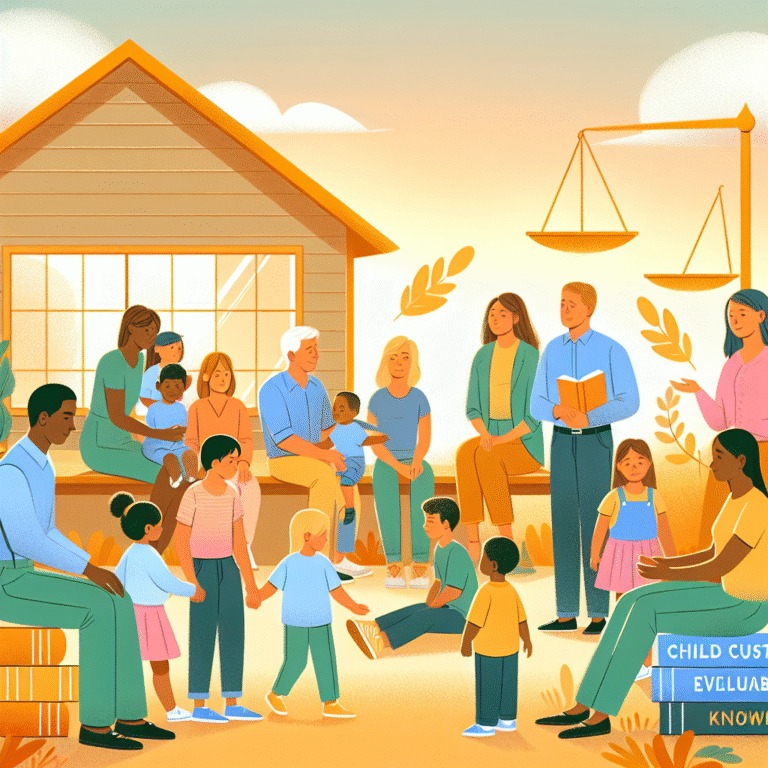
Introduction
Imagine standing in a courtroom, the air thick with anticipation, as a child is called to the stand. Their small frame, trembling slightly, prepares to recount events that could shape lives and influence justice. At that moment, the question arises: Can We Trust Their Tales? Understanding Child Witness Reliability is not just a critical query; it’s the foundation upon which legal systems are built, shaped by both compassion and skepticism.
In an age where child testimony can be pivotal in cases ranging from custody disputes to serious criminal allegations, understanding the intricacies of a child’s reliability is essential. Children possess unique perspectives and memories shaped by different cognitive and emotional processes than adults. As we dive deeper into this nuanced topic, we’ll uncover the fascinating science behind child witness reliability, explore impactful case studies, and confront the challenges that lie ahead.
The Cognitive Landscape of Childhood Memory
Developmental Psychology and Memory
The journey of a child’s memory is intertwined with their cognitive development. Research in developmental psychology reveals that children perceive, interpret, and recall experiences differently than adults. Factors such as age, emotional context, and social influences can significantly impact how a child forms their narratives. For instance, younger children are more susceptible to suggestion, while older children may possess more coherent recall abilities.
Table 1: Cognitive Development and Memory Reliability
| Age Group | Memory Characteristics | Reliability Factors |
|---|---|---|
| 3-5 years | Limited concept of time; suggestible | Highly influenced by adults; less reliable narratives |
| 6-9 years | Improved memory recall; understanding of sequences | Increased reliability but still susceptible to leading questions |
| 10+ years | More consistent and logical memory; capable of critical reflection | Generally more reliable, though still affected by stress and trauma |
The Impact of Trauma and Stress
Trauma can dramatically distort a child’s memory. Events of significant emotional weight often lead to fragmented recalls and varied interpretations. For instance, a study found that children who experienced trauma were more likely to display inconsistencies in their narratives due to anxiety or fear of repercussions.
Case Study: The McMartin Preschool Trial
The McMartin Preschool trial, one of the most infamous child molestation cases in American history, exemplifies how trauma and suggestion can warp memory. During the investigation, many children reported detailed accounts of abuse, fueled by leading questions from investigators. Ultimately, the case collapsed due to the reliance on unreliable testimonies, raising the overarching question: Can We Trust Their Tales? Understanding Child Witness Reliability takes center stage.
Social Influences on Child Testimony
The Role of Adults in Memory Formation
Children are profoundly influenced by their environments. The presence of authority figures can skew their recollections. When a parent or police officer suggests a particular narrative, children may unconsciously adopt that perspective, believing it to be their own memory.
Example: Leading Questions and Memory Distortion
Studies have shown that when children are asked leading questions, such as “Did the man in the blue hat tell you to do that?” they’re likely to incorporate that detail into their recollections even if it never occurred. This leads us to ponder—how reliable are their tales when adults guide their memories?
Peer Influence
Peer dynamics can also significantly affect what a child recalls. Children may discuss events amongst themselves, leading to a shared narrative that can diverge from the truth. This phenomenon exemplifies the social nature of memory and the need for careful handling of child testimonies in legal contexts.
Enhancing Child Witness Reliability
Best Practices in Interviewing
To mitigate the risk of memory distortion, experts emphasize the importance of employing best practices when interviewing child witnesses. Techniques such as the NICHD Protocol, designed to encourage open-ended responses and minimize suggestive questioning, have shown promising results.
Chart 1: Enhancing Child Testimony Reliability with Best Practices
| Technique | Description | Impact on Reliability |
|---|---|---|
| Free Recall | Allowing the child to narrate the event freely | Improves accuracy |
| Open-Ended Questions | Encouraging detailed descriptions without leading | Reduces suggestibility |
| Supportive Environment | Ensuring a comfortable and non-threatening space | Increases willingness to share |
Training for Professionals
Police officers, social workers, and legal professionals must undergo specialized training to interview child witnesses effectively. This training stresses the avoidance of leading questions and the creation of a safe, supportive environment, ultimately aiming to yield the most authentic testimonies.
Real-World Implications
The Legal System and Child Witnesses
The importance of understanding child witness reliability extends deeply into the legal realm. Courts increasingly recognize that while children can provide valuable insights, their testimonies must be assessed critically alongside corroborative evidence.
Case Study: The Case of Lindsay Hawker
In a high-profile murder case, the crucial role of child witnesses came to the forefront. Lindsay Hawker was murdered in Japan, and several children reported seeing events surrounding her disappearance. While their testimonies helped shape the investigation, the judicial system was careful to cross-reference their statements with physical evidence. The verdict hinged not solely on their accounts, highlighting the delicate balancing act between valuing young voices and demanding rigorous evidence.
The Role of Child Advocacy
Organizations advocating for child welfare continuously seek to bridge the gap between vulnerability and credibility. By promoting awareness of best practices and emphasizing the importance of sound techniques in interviewing child witnesses, these entities aim to improve outcomes in judicial proceedings involving children.
Ethical Considerations
The Responsibility of Stakeholders
It’s imperative for stakeholders—lawyers, judges, and social workers—to approach child testimonies with responsibility and ethical standards. By prioritizing the child’s well-being, professionals can help foster a system that values their voices while also ensuring justice is served.
Balancing Compassion with Skepticism
This delicate balance is crucial. Understanding child witness reliability doesn’t mean disregarding their accounts; rather, it advocates for a holistic approach that weighs their information alongside comprehensive investigations.
Conclusion
The question Can We Trust Their Tales? Understanding Child Witness Reliability is complex and multifaceted. As we’ve explored, child testimonies are influenced by cognitive development, emotional states, social dynamics, and the interviewing techniques employed by adults. While children can offer poignant insights into events they’ve witnessed, their narratives often require careful consideration and corroboration.
By embracing methodologies that enhance reliability and fostering empathetic environments, we can better support young witnesses. In a world where their voices are crucial, understanding the layers of child witness reliability is our collective responsibility. We must strive to ensure that every tale told is honored, safeguarded, and committed to justice.
FAQs
1. Why are child witnesses important in court cases?
Child witnesses can provide unique perspectives and key information in cases involving crimes against individuals, particularly those affected by trauma or family jurisdictional disputes.
2. What makes children’s memories less reliable than adults’?
Children’s memories are often more suggestible and influenced by external factors, leading to inaccuracies or distortions, especially when subjected to leading questions.
3. What interviewing techniques enhance child testimony reliability?
Best practices include utilizing open-ended questions, creating a supportive environment, and using free recall to minimize suggestibility.
4. Are there guidelines for professionals who interact with child witnesses?
Yes, many resources exist, including the NICHD Protocol, which provides structured techniques to assist professionals in effectively interviewing child witnesses.
5. How can parents support children in legal situations?
Parents can help their children by maintaining open communication, reassuring them about the process, and ensuring they feel safe and supported when sharing their experiences.
In exploring Can We Trust Their Tales? Understanding Child Witness Reliability, we hope to spark discussions that lead to improvements in both legal systems and child advocacy, ensuring that their voices resonate and lead to justice.















